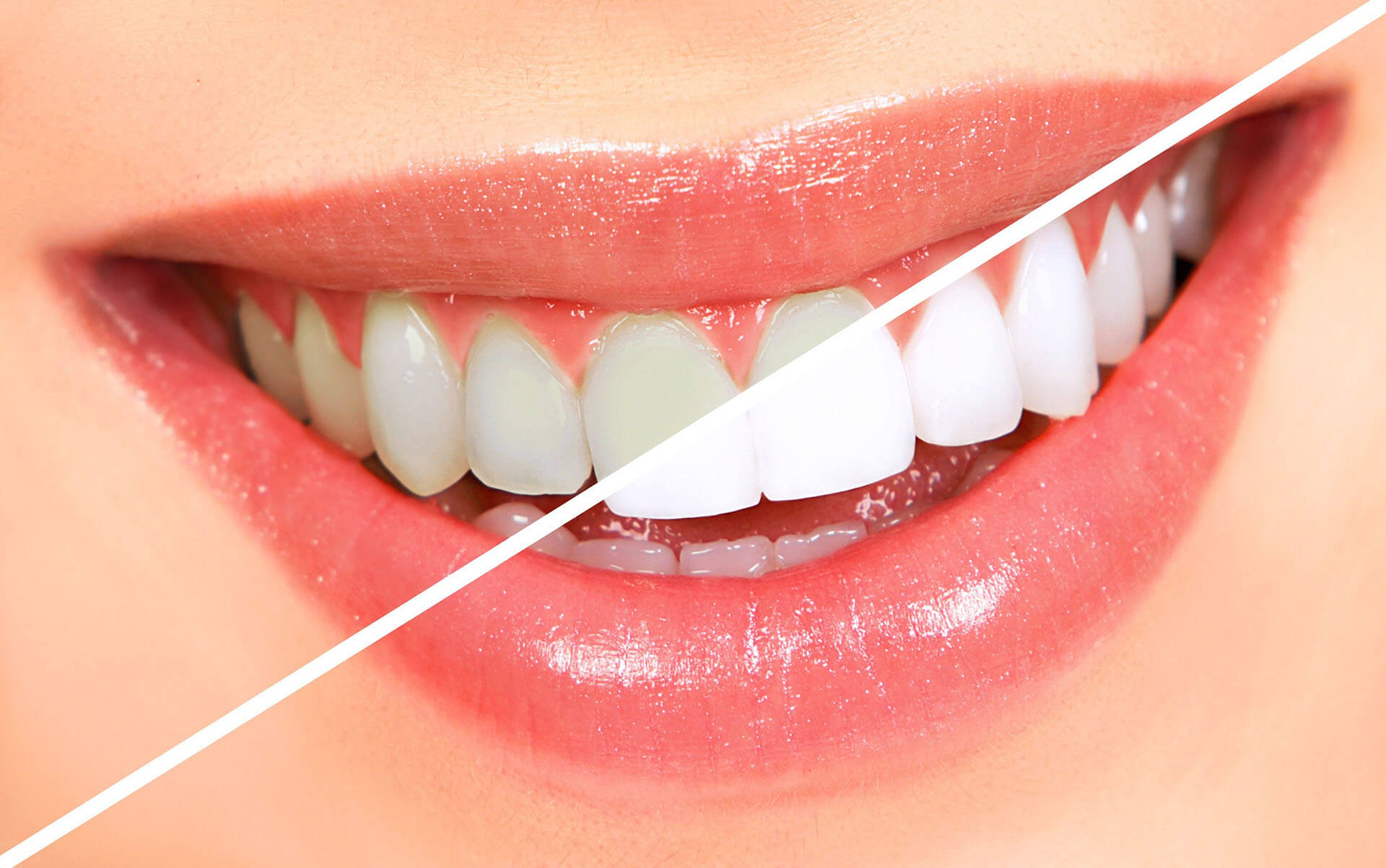
“I wish I had a smile like the actors in Hollywood movies!” for each of us, such an idea has come to mind. One of the main cornerstones of a beautiful smile is the colour of teeth.
First, what race a person belongs to and what latitudes they were born in — the further north, the more yellow the color of their teeth will be. Secondly, what is a person’s lifestyle, what are their habits. Whether a person consumes a lot of colourful food and drink (e.g. various berries, coffee, red wine), smokes, chews tobacco. Third, it should be remembered that with years too, teeth can lose their light tone and become slightly darker. It should be noted that there are also medicinal products that may affect the colour of the teeth – for example, if a mother has taken a medicinal product such as tetracycline during pregnancy or a child of a certain age.
Oral hygiene, whitening and bleaching toothpastes
If a patient wants lighter teeth, then it’s important to find out the reason why the color of the teeth isn’t as light as you’d like. If it’s just the pigment that’s accumulated everyday, then professional oral hygiene is most often enough 1 every six months. And the patient may be advised to use some whitening or bleaching toothpaste.
Whitening toothpastes are considerably more lenient and do not contain a chemical bleaching agent, but work with enzymes (enzymes). They are gentle and do not contain very many abrasives.
Bleaching toothpastes contain aggressive bleaching agents — hydrogen peroxide, carbamide peroxide — as well as may be at lower pH and also contain many abrasives. This is how these toothpastes whiten the pigment chemically and mechanically remove it. So they should be used 1 time a day, brushing your teeth for the second time with some other toothpaste. And toothpastes are available for coffee and tea users, smokers. Whitening and bleaching toothpastes should be chosen in consultation with a dentist.
With toothpastes, radical changes will not be achieved, but the natural tone of teeth will be achieved and maintained.
If a patient wants slightly lighter teeth, then bleaching graves can be used to whiten their teeth. The patient is impressed, the dental technician makes graves, the best bleaching agent for the patient is chosen with the dentist, both by concentration and application (day or night bleaching). These bleaching agents contain one of the peroxides as an active substance. The benefit to the patient is lower bleaching costs, the graves are reusable. With graves, you can get teeth lighter than 2-3 shades on average.
The other of the “in Office” bleaching methods is to whiten the system in the dentist’s office. Our clinic tier uses a German-made bleach system called Flash. This system works like this – isolating the gums in the patient, applying a bleaching gel to the teeth and then adding a blue light lamp that activates the bleaching agent. Blue light works smoothly on each tooth, as well as having a slightly different wavelength of light. This allows systems to operate much more intensively. For the flash system, these are typically 3-4 cycles over 15 minutes. With the Flash system, you can get teeth lighter than 6 to 7 shades. Here too, peroxide acts as a bleaching agent. This system comes with toothpastes, bleaching pencils, mouthwashes to help maintain the resulting effect. If bleaching is not to have a negative effect on your teeth, it is imperative that you approach a specialist with experience in tooth whitening.
The bleaching effect persists for up to 2 years, but this is the maximum period because preserving the effect directly depends on a person’s lifestyle. In order to maintain the result after colouring food, water should be used to rinse the mouth and to try to consume colouring matter less. Care of the oral cavity with effect-maintaining toothpastes, rinses should be monitored in particular. Certain effects will be far more temporary for those who use coffee, tea and smoke a lot everyday.
Before any bleaching, a dentist should be approached for a preventive examination and dental treatment if necessary. Only perfectly healthy — repaired — teeth can be bleached! Oral hygiene should be carried out before bleaching begins. In the case of in Office bleaching, dental hygiene should be carried out at least one week before the bleaching process.
After bleaching, teeth can be intensely sensitive to temperature, touch, may be spontaneous tooth pain. In particular, tooth sensitivity can increase in patients who have retreated gums, there are cracks in the enamel, poor quality seals. The underlying reason is that teeth come into contact with a fairly strong chemical compound, but in case of system bleaching, in addition to the chemical, a factor such as long-term drought teeth works (teeth are isolated from saliva access during bleaching). This sensitivity usually lasts 2-3 days and patients are advised to use enamel-strengthening (fluorinated) tips and/or sensitivity-reducing toothpastes. There are cases where painkillers should also be taken.
There can be gum irritation. It should also be stressed that seals may need to be changed after bleaching. This is especially true for front teeth because they will vary in colour.
Finally, I would like to emphasise that tooth whitening should be a valid choice, not a one-day whim. As well as being aware of both risks and benefits, one should logically approach the choice of colour, as it is not in overwhelmed teeth that beauty is present.
The human body is beautiful when it’s harmonious!